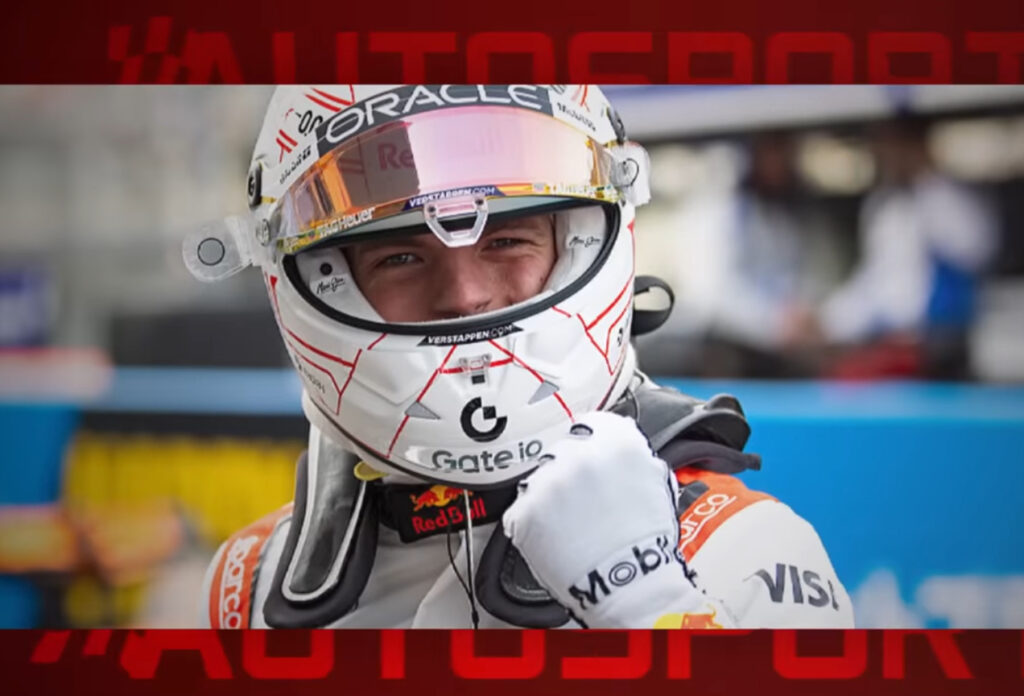In a sport where margins are measured in milliseconds and perfection is often unattainable, Max Verstappen’s pole lap at the 2025 Japanese Grand Prix was something else entirely—surgical, fearless, and technically immaculate. After a troubled Friday, Verstappen pulled off what Red Bull Team Principal Christian Horner hailed as “one of the best laps he’s ever delivered,” snatching pole from the jaws of a weekend that looked dangerously off-course.
But make no mistake—this wasn’t just Verstappen magic. It was the result of a 48-hour turnaround that saw Red Bull Racing overhaul their car setup from the ground up. Or as Horner put it: “We turned the car upside down to give Max what he needed.”
A Friday to Forget
Suzuka is a driver’s circuit—high-speed, high-risk, and brutally honest. The iconic figure-eight layout doesn’t hide weaknesses. And for Red Bull, the early signs weren’t good. Verstappen ended Friday’s Free Practice 1 and 2 trailing the pace of Lando Norris, Charles Leclerc, and even Oscar Piastri, with balance issues plaguing the RB21. The car was nervous under braking, oversteering through the Esses, and visibly unstable in Sector 1.
In a year where McLaren and Ferrari have been inching closer to Red Bull’s dominance, Suzuka suddenly became a pressure point. Verstappen was blunt: “The car wasn’t doing what I wanted. The rear was loose, and we just couldn’t hook it up.”
It wasn’t just about raw speed—it was about confidence. At Suzuka, if a driver doesn’t trust the car through the fast transitions of Degner, Spoon, and 130R, they’re leaving tenths on the table. For Verstappen, tenths are the difference between pole and playing catch-up.
Inside the Overnight Overhaul
What unfolded between Friday evening and Saturday qualifying was nothing short of a technical masterclass. The Red Bull engineering team, led by Adrian Newey and Pierre Waché, dug into telemetry, onboard footage, and comparative analysis. Changes were radical and holistic.
According to internal sources, the ride height was adjusted to stabilize rear grip, the suspension stiffness was reduced to handle the track’s undulations more smoothly, and aero balance was shifted forward to give Verstappen more confidence on turn-in. They also worked on differential mapping, allowing more stable rotation in low-speed corners like the hairpin.
What Red Bull did wasn’t just tweaking—they re-engineered the car overnight with surgical precision. And then they gave the keys to Verstappen, who delivered with the kind of clinical aggression that defines champions.
Qualifying: The Lap Heard Around Suzuka
As Q3 approached, the paddock buzzed with uncertainty. McLaren had looked rapid through all three practice sessions. Ferrari had been consistent. Red Bull? They were a question mark.
Then Verstappen lit up the timing screens.
His pole lap time of 1:27.582 was a symphony of commitment and control. Through the first sector, he was razor-sharp, dancing the RB21 between the white lines through the iconic Esses. The car looked reborn—planted, reactive, lethal.
At Spoon Curve, where he’d struggled for rear grip on Friday, Verstappen found a new line and took it flat with surgical throttle control. At 130R, he barely lifted. And in the final chicane, he braked later than anyone, trusting that the changes beneath him would stick.
He crossed the line four-tenths ahead of Norris. Silence fell, then erupted. Red Bull’s garage was on its feet.
Christian Horner: “One of His Best Ever”
In the post-qualifying press, Christian Horner couldn’t hide his admiration:
“That lap from Max… I mean, that was something special. Considering where we were on Friday, this is probably one of the best qualifying laps I’ve seen from him. We threw everything at the car overnight—we changed the entire setup philosophy—and he delivered.”
Horner’s comments weren’t hyperbole. Verstappen’s ability to adapt to a completely different car from Friday to Saturday and extract its absolute limit is a testament to his understanding of vehicle dynamics, his relationship with the team, and his complete mental fortitude.
Verstappen: “This One Felt Earned”
Max himself was equally candid:
“It felt amazing. The car just came alive today. The team worked late into the night—every change we made helped. It’s one of those laps where everything clicks. You’re not thinking; you’re just doing. And yeah, this one felt earned.”
It’s that word—earned—that lingers. Verstappen is no stranger to pole positions. But this one wasn’t about dominant machinery or perfect practice sessions. This was a rescue mission. A reset. A response.
McLaren, Ferrari Left Searching
Lando Norris, who had topped FP2, was respectful but clearly disappointed:
“We had the pace yesterday, but Max and Red Bull turned it around. That’s what champions do. We’ll fight tomorrow, but credit where it’s due.”
Ferrari, too, had shown signs of promise through Charles Leclerc, but couldn’t match the Red Bull turnaround. While they remain contenders for the podium, the aura of Verstappen’s lap shook the paddock.
Red Bull’s Setup Philosophy: Risk Meets Reward
The performance at Suzuka may be remembered not just for the lap, but for what it signifies. In an era where teams often play it safe with setup windows and incremental changes, Red Bull reminded everyone of the old-school Formula 1 ethos: take big risks, reap big rewards.
It also showcases the unique feedback loop between Verstappen and his engineers. Few drivers in the modern era are as involved in the technical side as Max. He’s not just fast—he’s fluent. His ability to articulate micro-level feedback, paired with Red Bull’s engineering agility, creates a synergy that wins not just races but weekends that should have been lost.
The Road Ahead
As race day looms, the job is far from over. Suzuka remains one of the most unforgiving tracks on the calendar, and tire degradation, wind changes, and strategy will all play roles. But Red Bull has given Verstappen the launchpad he needed. And if Saturday was any indication, the reigning champion is more than ready to convert.
What’s more striking is what this moment says about Red Bull’s continued evolution. In a season where rivals have closed the gap, and where Verstappen has had to fight harder than in recent years, this pole wasn’t a display of dominance—it was a display of resilience and adaptability.
Final Thoughts: A Lap for the Archives
Max Verstappen’s pole at the 2025 Japanese Grand Prix won’t just go down as another stat—it will be studied, dissected, and replayed for what it represents. A driver at the peak of his powers, backed by a team capable of transformative engineering in 24 hours, delivering under pressure in the sport’s most demanding environment.
Red Bull turned the car upside down. Verstappen turned the grid inside out.
And Formula 1, once again, witnessed greatness—not just in performance, but in perseverance.
No comments yet.







